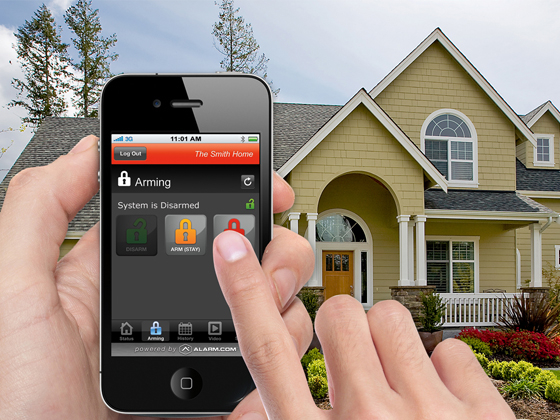
LOCKS
• The bolt of the lock should be at least one inch long.
• Use two locks spaced wide apart on the outer doors.
• The connecting screws that hold the lock together must be on the inside of the home and made of hardened steel. Screwheads should not be visible on the outside.
• Door locks should be checked at night. It is common practice for criminals to first check for open doors or windows before breaking in.
• Keys of exterior doors should never be given to domestic help.
• Change the locks of outer doors:
o If the key has been compromised.
o If the key is misplaced (change the lock even if you find it).
o If you have new household staff.
o When moving into a new house with pre-installed locks.
• At night, leave the keys half turned inside the locks. This will pre-empt someone from opening the door using a duplicate key.
Breaking into a building: common techniques
1. Forced entry: Tools are used to unlawfully enter a building for the purpose of committing a theft or felony. The thief creates an opening in the wall or the roof and breaks doors and windows.
2. Fake credentials: An attempt is made to enter the house by using the credentials of a repairman.
3. Compromised insider: With the aid of domestic staff, the thief makes an entry into the house.
LIGHTS
• Use security lighting to deter potential criminals.
• Connect external lights to a UPS to have continuous availability of light.
• Have adequate exterior lighting to illuminate the house from outside.
DOORS
• The exterior doors are the first barriers meant to offer maximum delay to burglars. They should either have a solid wood or metal core.
• The front door should open outwards so it cannot be pushed open.
• The switchboard of all lights should be placed inside the house.
• Use door chains and door viewers that provide a 180-degree view.
• Glass should not be used in an exterior door and there should not be any window within 40 inches of it.
Protective Measures
• Determine the level of security required for your house and whether or not you need to hire the services of a professional security company. Too many unnecessary protective measures can invite the undue attention of burglars.
• Find out about previous incidents of theft, robbery or burglary in the vicinity.
• Do not have dark corners in or around your house. Look for wild growth, deserted or dimly lit areas. These could serve as hiding places for criminals.
• Find out where the nearest police station is located and get its phone number.
• Do not display your name outside the house. Just mention the address.
• Beware of people ringing your door bell asking for an address or carrying out a survey. They could actually be probing your response and ascertaining the number of people in your house. Place an intercom at the entrance with a camera.
• Always keep copies of CNICs and recent photographs of your domestic help.
WINDOWS
• Consider securing your windows with materials like tempered glass, which is much more durable and less expensive than traditional glass since it is more difficult to break it.
• Laminated glass, also known as safety glass, is another option for windows. To break through safety glass, a burglar would have to constantly strike the same spot thereby creating a lot of noise and risk alerting people around.
• A Charley bar is a device that mounts to the frame opposite the sliding windows and swings down behind the window to stop it from sliding. A stick inserted into the bottom track can be used in the same way. This is useful for sliding windows.
• Install metal grills with small spaces in their patterns.
• Avoid planting trees close to your windows, as these may help burglars climb up to more accessible windows.
• Keep one window in every bedroom available as a fire exit by having sliding grills with locks.
USE OF WEAPONS
If you want to use a weapon, the following things should be kept in mind:
• You must have a license.
• Be aware of the consequences of shooting a thief.
• The decision to use weapons should be made very carefully.
• Handle the weapon correctly as you may not get a second chance.
• Hide weapons from household staff and children.
SURROUNDINGS
• Consider keeping dogs as a deterrent to thieves.
• Trim trees and shrubs so that they cannot be used as hiding places for intruders.
Omar Safdar has served in the Pakistan Army for over 20 years and is a certified protection professional (CPP). He specialises in the fields of loss prevention and corporate security. He tweets @omarsafdar_CPP
Published in The Express Tribune, Sunday Magazine, August 16th, 2015.

















COMMENTS
Comments are moderated and generally will be posted if they are on-topic and not abusive.
For more information, please see our Comments FAQ